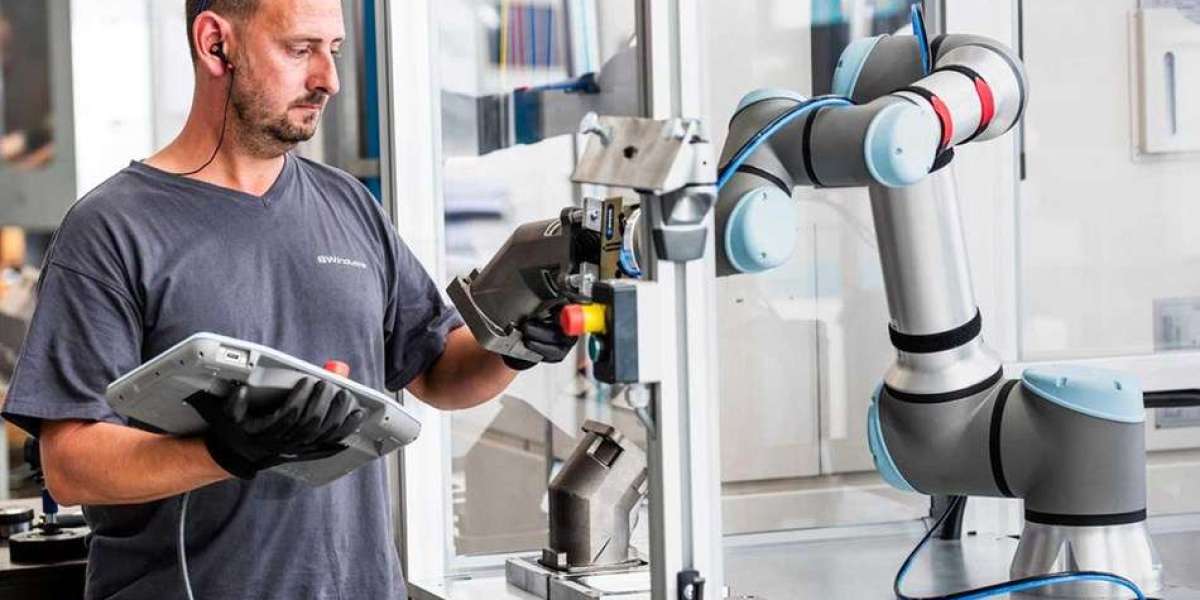Introduction
The rise of Industry 4.0 and smart factory initiatives is revolutionizing manufacturing processes worldwide, and collaborative robots (cobots) play a pivotal role in this transformation. Cobots, designed to work safely alongside humans, enhance flexibility, productivity, and automation in smart factories. This article explores how the collaborative robots market is being shaped by Industry 4.0 trends and smart manufacturing demands.
1. Understanding Industry 4.0 and Smart Factories
Industry 4.0 represents the fourth industrial revolution, emphasizing digitalization, connectivity, and automation. Smart factories leverage IoT, cloud computing, big data analytics, and robotics to create self-optimizing manufacturing environments.
2. Role of Collaborative Robots in Smart Factories
Human-Robot Collaboration: Cobots enable close interaction with human workers, complementing their skills and enhancing productivity.
Flexibility: Easy to program and redeploy, cobots support agile manufacturing and rapid changeovers.
Data Collection: Equipped with sensors, cobots provide valuable real-time data for monitoring and optimization.
Integration with IoT: Cobots communicate with other smart devices to coordinate tasks and improve efficiency.
3. Benefits to Manufacturing Operations
Increased Productivity: Automation of repetitive and precision tasks frees human workers for higher-value activities.
Enhanced Quality Control: Consistent performance reduces defects and improves product quality.
Safety Improvements: Collaborative features minimize workplace accidents.
Cost Savings: Reducing downtime and increasing operational efficiency lowers overall costs.
4. Industry Adoption Trends
Automotive: Cobots assist in assembly, welding, and painting, adapting quickly to model changes.
Electronics: Precise handling of small components benefits from cobot flexibility.
Consumer Goods: Rapid product customization is supported by agile cobot deployment.
5. Challenges in Smart Factory Integration
Interoperability: Ensuring cobots seamlessly integrate with diverse systems remains a technical challenge.
Cybersecurity: Increased connectivity raises concerns about data security and system vulnerabilities.
Workforce Adaptation: Training employees to effectively work alongside cobots is essential.
6. Future Outlook
As Industry 4.0 technologies mature, the role of cobots will expand, with advancements in AI, machine learning, and sensor technology further enhancing their capabilities. Cobots will be central to achieving fully autonomous, flexible, and efficient smart factories.
Conclusion
Collaborative robots are integral to the evolution of smart factories and Industry 4.0 initiatives, driving efficiency, safety, and flexibility in manufacturing. Their continued integration with digital technologies promises to redefine industrial operations and shape the future of manufacturing.








